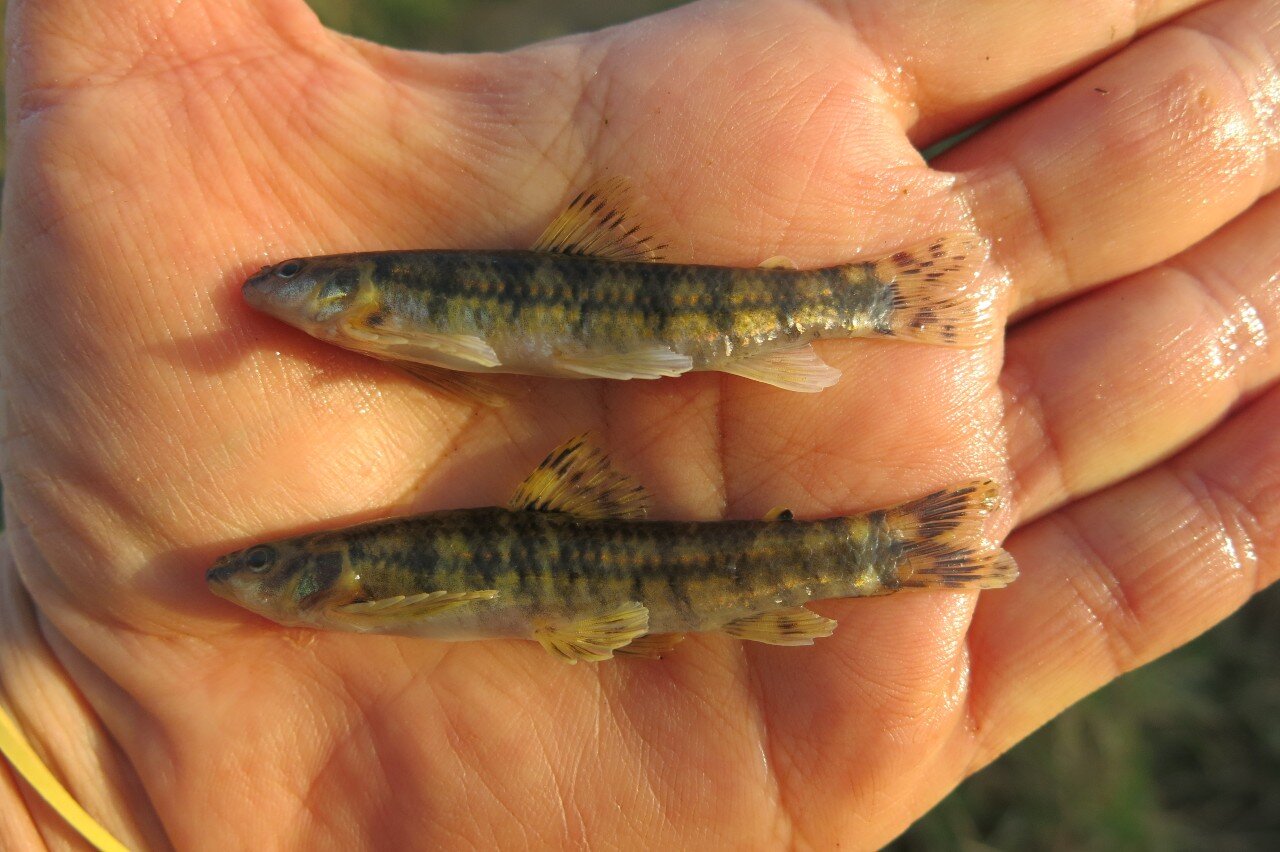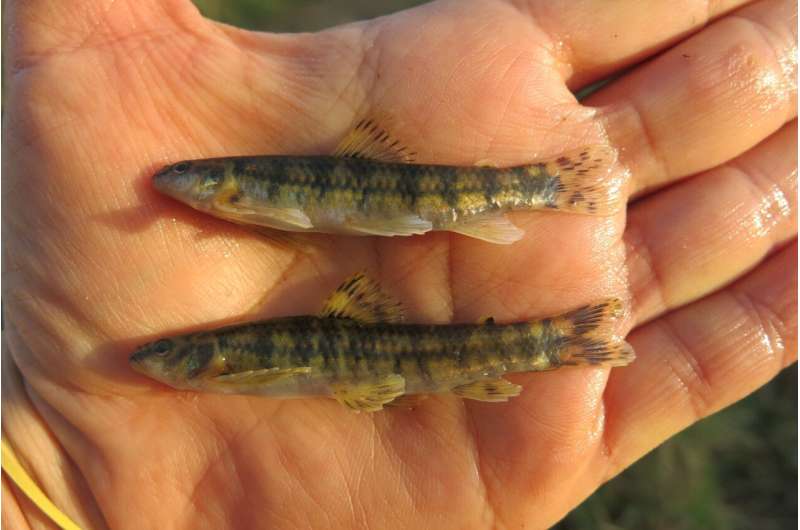

With 84 species currently described, Characidium may be the most diverse fish genus known to science. This is the conclusion reached by Brazilian scientists after analyzing more than 4,400 specimens of this genus of South American darters endemic to the Neotropical region and known in Brazil as mocinha or charutinho.
In an article published in the journal Systematics and Biodiversity, researchers affiliated with São Paulo State University (UNESP) and the Federal University of Bahia (UFBA) confirm the occurrence of 15 species in rivers located in four ecoregions of the Northeast (Caatinga Nordeste e Drenagens Costeiras, Mata Atlântica Nordeste, Parnaíba, and São Francisco).
Ten of the species had already been described, and four required additional molecular analysis for confirmation as novel species. According to the authors, the remaining species was certainly new to the scientific literature and had yet to be named.
“Some species of Characidium are almost identical in external morphology [body shape and characteristics]. Others not only look very similar but are also very close genetically and can’t be distinguished from each other by the molecular marker most used for this type of comparison,” said Leonardo Oliveira-Silva, first author of the article and a researcher at the Botucatu Institute of Biosciences (IBB-UNESP).
The study began while Oliveira-Silva was a Ph.D. candidate. With his thesis advisor Angela Zanata, a professor at UFBA’s Biology Institute and last author of the article, he explored the main rivers of the Northeast in order to find out how many species of Characidium occurred there.
In addition to the collected material, they analyzed specimens deposited in scientific collections by Zanata and other researchers. The set in question comprised more than 4,400 individuals, the largest ever for this group, and the analysis encompassed morphological data as well as molecular data obtained from tissue samples.
“The collections contain many individuals with only the genus on the label because even specialists in the group find it hard to distinguish between some of the species. In addition, some of the existing descriptions fail to account for the variability within a given species. Hence the importance of defining each one very clearly,” said Zanata.
Recent diversity
Among the findings was a genetic distance smaller than 2% between two species with significant morphological differences: Characidium bimaculatum and Characidium deludens.
“This is a problem because the molecular marker most widely used to detect freshwater species, the gene COI, determines that 2% is the limit to distinguish one species from another, but several recent studies have shown that this isn’t necessarily an absolute truth and that it’s very important to consider the evolutionary history of a species before making decisions about name changes,” Oliveira-Silva said.
The two species in question are therefore closely related, but other genes must be included in the analysis in order to establish whether they are different species and compare their evolutionary histories.
More such discrepancies are expected, partly because Characidium was defined as monophyletic (descended from a common evolutionary ancestor) in a 1993 study based on only 18 species. At that time no molecular tools were available for the analysis of evolutionary history (phylogeny) and the rich diversity of the genus was not yet understood.
Monophyly in this case is the hypothesis that all species of Characidium descend from a common ancestor, belong to the same lineage, and share their evolutionary history. In the study, the researchers noted that a subgroup, which included Characidium chancoense, was closer to the genera Leptocharacidium and Microcharacidium, making Characidium non-monophyletic.
Another finding, obtained by means of a phylogenetic analysis, was that several species of Characidium in the Northeast were very closely related to species in other South American ecoregions, such as Alto Paraná, Fluminense, Paraíba do Sul and Tocantins-Araguaia.
All the rivers and catchment basins concerned are now disconnected, so the most plausible hypothesis is that common ancestors of these species migrated from one basin to another at a time when they and the rivers in them were connected.
The researchers are now expanding their survey well beyond the limits of the Northeast in order to see if the evidence they have assembled so far is confirmed. The aim of the project led by Oliveira-Silva at UNESP is to analyze species belonging to the genus Characidium in all South American rivers in order to establish the most complete phylogeny of the genus to date. In addition, the researchers are looking for species that have not yet been described.
He and Zanata were recently in Peru and Colombia, where they were able to analyze specimens deposited in collections and, through relationships with collaborators there, to obtain tissue samples for molecular analysis.
“Thanks to these collaborations, we’re obtaining tissue from species living in every part of South America and will be able to answer many significant questions about these animals,” Zanata said.
More information:
Leonardo Oliveira-Silva et al, Underestimated diversity in Characidium (Characiformes: Crenuchidae) from Neotropical rivers revealed by an integrative approach, Systematics and Biodiversity (2024). DOI: 10.1080/14772000.2024.2346510
Citation:
Study identifies possible novel species in fish genus endemic to Neotropics (2024, September 18)
retrieved 18 September 2024
from https://phys.org/news/2024-09-species-fish-genus-endemic-neotropics.html
This document is subject to copyright. Apart from any fair dealing for the purpose of private study or research, no
part may be reproduced without the written permission. The content is provided for information purposes only.